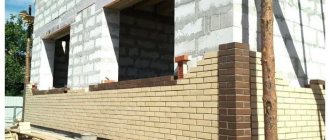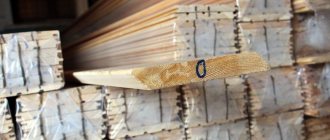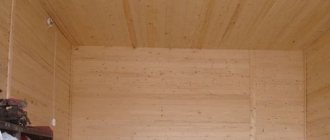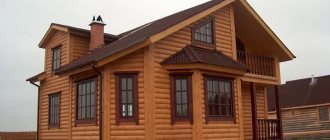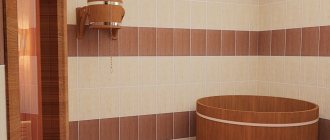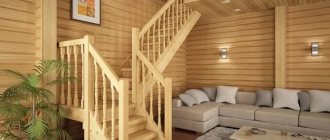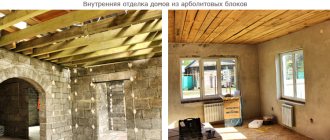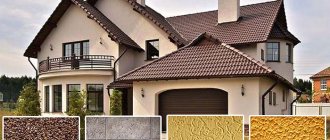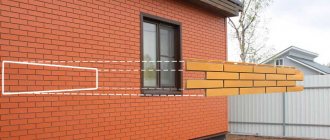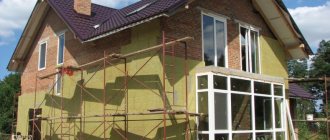When building a private house, it is important to take care not only of its interior design, but also of the exterior decoration of the building. At the moment, the construction market is overflowing with materials used to decorate the facade of a country house, which allows everyone to choose the best option, taking into account the cost of finishing materials, their appearance and performance properties. Some people opt for plaster and wood, others prefer brick and stone, but now we’ll talk about metal panels, which are very popular.
Corrugated Metal Siding
Corrugated metal siding, originally used for its durability and strength, has grown into a staple product for both residential and commercial projects. Since metal panels (facade cassettes) can be created in a wide range of colors, the subtle waves of corrugated wall panel can create different shades of color throughout the day. Combined with a relatively simple installation process, this aesthetic appeal has made corrugated panels very popular in modern, traditional and rustic designs.
A simple reason for the popularity of this type of metal panels is their durability. The natural shape of a corrugated metal panel gives it a design advantage over a flat panel made of the same base material. In addition, continuous corrugation helps hide small imperfections over time from weather conditions or impacts. For these reasons, corrugated metal systems have been used everywhere for many years.
Metal panels for facades have many undeniable advantages, such as:
- reliable protection of insulation and walls from negative atmospheric influences;
- maintaining the dew point inside the insulation so that the load-bearing wall remains dry, without freezing in winter and not overheating in summer;
- prevention of moisture accumulation in the insulation due to the presence of a ventilation gap;
- light weight, when reconstructing buildings there is no need for major repairs of walls;
- installation is quite simple and can be performed at any time of the year, because... “wet” processes are excluded;
- noise protection, creating an acoustic buffer effect;
- cyclic thermal deformations are structurally excluded;
- low cost of the entire facade system as a whole;
- fire safety;
- very long service life (more than 30 years);
Vertical metal siding
Metal wall panels (facade cassettes) provide the ability to vertically align each panel to create attractive exterior lines. Using traditional panels or more modern ones, living spaces are provided with a variety of designs. A popular option in commercial, residential and agricultural applications, vertically controlled metal siding provides clean lines and can help draw attention to key features of a build.
The most common use for metal siding is to run it vertically. The choice between credential and horizontal siding comes down to visual appeal. Vertical siding creates the traditional look of tall, clean lines while making spaces appear larger than they actually are. Although vertical siding can be a little more difficult to install, the end result will be worth it.
Types of coatings
A rich color palette allows you to choose the optimal solution for any design idea. A variety of color solutions will help you choose the desired shade so that the façade fits organically into the overall style.
Below we consider the basic types of polymer coatings for protection and decoration:
- polyurethane – has good strength, is resistant to temperatures and mechanical damage, and is not afraid of exposure to ultraviolet radiation.
- PVDF (composed of acrylic and fluorine-containing polymers) is a special coating that can be used to create a glossy surface. Resistant to environmental influences, durable and versatile.
- Plastisol is a matte coating, not inferior in characteristics to a polyurethane coating, its thickness is 200 microns. Among the disadvantages: it is not resistant to high temperatures.
- Pural - resistant to fading, thickness varies within 50 microns, protects steel well from corrosive influences;
- Polyester is a relatively inexpensive material, a wide color palette, and a layer thickness of 25 microns. On sale you can choose different coatings: matte or gloss.
Modern manufacturers of coatings for siding panels offer many standard and original solutions. Among the latter you can find unique imitations of stone, velor, granite chips, and wood. Special polymer coatings provide adequate protection from various types of influences. It is impossible to say for sure how much the cladding costs, it all depends on the square footage. m of working area and specifics of work. To cover the facade with siding, it is better to contact professionals who will first calculate the amount of work in square meters and help you decide on the type of material.
Horizontal metal siding
Horizontally aligned panels are currently very popular in modern commercial projects and are also a traditional siding option in residential projects. Horizontally executed wall panels (facade cassettes) are often used due to their ability to be used over long lengths, creating a seamless line along the length of the building.
The choice between horizontal and vertical siding often comes down to visual appeal. Vertical siding offers a unique look, while traditionally horizontal siding is considered easier to install. With horizontal metal siding, you can achieve both a traditional and modern look for your home. With so many panel options, you can now create a unique or modern look by choosing the panel rather than deciding the direction in which it runs.
Metal siding
Metal siding is a galvanized steel sheet with several layers of protective coating. It is made by cold rolling, resulting in siding of the required shape. Metal siding of complex shapes is produced using machine or manual bending. After shaping, the sheets are coated on both sides with the following layers:
- anti-corrosion – extends the service life of the material and increases resistance to corrosion;
- primer – provides better adhesion to the polymer.
Then one side is coated with paint and varnish, and the other has a layer of polymer coating.
Metals are processed with different types of polymers:
Polyester Has average resistance to external mechanical and natural influences, has a glossy sheen or matte surface. Service life is about 20 years.
Plastisol is resistant to aggressive substances and frost, but at high temperatures it loses its properties. Imitation of a relief surface. Service life more than 30 years.
Pural is very resistant to fading and easily tolerates temperature fluctuations. Not resistant to bending deformation. Smooth finish. Approximately 25 years.
Polyvinylidene fluoride Resistant to weathering, aggressive substances and mechanical stress. Glossy or metallic look. The longest is 50 years.
Metal siding varies in length: from 0.5 m to 6 m. As for the width, the range is smaller: 20-25 cm. This is the most optimal indicator to minimize the amount of waste during use.
Advantages of metal siding
Metal siding has a number of significant advantages that make it one of the most popular finishing materials. Among the main ones it is worth noting:
- Resistant to temperature changes. The use of steel sheets protected by a multilayer coating allows the material to withstand even severe frosts without deformation.
- High strength characteristics. Resistance to mechanical stress is confirmed by a long warranty period from the manufacturer.
- Simplified installation process. You can install siding yourself in a short time, having a basic set of tools and skills.
- Easy to care for. There is no need to purchase specialized products to remove contaminants.
- Good maintainability. Deformed or damaged sheets can be easily replaced.
- Resists the formation of moss and the development of pathogens: fungus, mold, etc.
- High level of fire safety.
- Environmentally friendly materials due to the absence of harmful, toxic substances in the composition.
- A wide range of both sizes and colors, which makes it possible to choose the ideal option for any occasion.
- The high level of corrosion resistance allows you to maintain the depth of color and excellent appearance of the facade for a long time.
Beautiful and reliable finish
There are also certain disadvantages, including:
- It is heavy, so when doing the finishing yourself, it is better to purchase sheets of shorter length. So, it will be possible to simplify the installation process.
- Low level of thermal insulation. When finishing, you will need to use additional insulation.
- It is impossible to return deformed sheets to their original shape. In case of severe mechanical damage, a complete replacement of the sheet will be required.
The listed disadvantages are secondary, since taking into account the nuances of installation and use, their manifestation can be excluded.
What to pay attention to
When choosing metal siding for house cladding , you should pay attention that installation can be carried out at any temperature. When finishing, uneven repetition of the pattern is possible when using material from different packages.
To obtain a unique, uniform facade, it is worth mixing siding from different batches.
As for the color variety, it is easy to select shades and combine them with each other, since metal siding is marked according to RAL.
Rustic Siding Options
Whether you're building a mountain cabin or want a country-style design, use a combination of metal siding with wood and exposed metal panel fasteners.
For many years, metal siding has been used in finishing private and country houses. The most popular panel styles have traditionally been corrugated siding, or barn panel siding. Colors play an important factor in achieving the rustic appearance of siding. As a more traditional alternative to painted metals, many people choose rust-proof steel siding to create an aged appearance on the side of their home.
Installation of metal siding
Finishing the facade of a house with metal siding is done quickly and easily. To do this, it will be enough to have minimal skills and a number of specific tools.
Required Tools
Before you begin, you should prepare the following tools:
- screwdriver and hammer drill for preparing the surface and holes;
- scissors, hacksaw, jigsaw for cutting panels;
- tape measure and marker for marking;
- hammer and riveter for fixing fasteners;
- level to determine the evenness of the installation of panels.
Having the necessary devices at hand, you can proceed to further processes.
Material calculation
To calculate the required amount of metal siding, you need to calculate the total area of the walls that need to be lined and subtract the area of the door and window openings. To the result obtained, you must add the % of waste:
- for smooth rectangular walls – 7-10%;
- for surfaces of complex geometric shapes with many recesses and protrusions - 10-15%.
Next, to find out the required number of panels, you should divide the final result by the area of one panel. It is important to simultaneously calculate metal siding , as well as the required number of components.
Insulation of facade walls
Thermal insulation is an important process that ensures a comfortable indoor atmosphere. Insulation boards should be mounted close to each other and securely fixed with dowels.
Thermal insulation
If necessary, a hydraulic barrier is additionally attached to minimize the accumulation of moisture and its harmful effect on the heat insulator and finishing. Thermal insulation must be carried out under the sheathing.
Installation of a frame under metal siding
Before you begin attaching metal siding, you should take care of the sheathing. This subsystem can be organized using a metal or wooden profile. Metal profiles are more expensive, but they are more reliable and protected from rotting and corrosion, since they have a protective galvanized coating.
Metal carcass
The optimal profile size is 60*40.
These parameters allow you to firmly secure the profile. The metal profile must be fixed to brackets that are secured to the wall with self-tapping screws or dowel nails.
Installation of corners and slopes
After fixing all the metal siding panels, you should begin finishing the corners and slopes. Additional elements for siding can be selected separately, but it is better to purchase products from one manufacturer in order to achieve complete harmony. J-profiles are used for finishing.
It is important that the prepared holes in the facade panel and the corner element meet clearly, so measurements should be taken at the initial stage.
Also for the installation of additional elements you will need:
- external and internal corners;
- slats – connecting, overhead, finishing;
- platbands.
Self-tapping screws should be used to secure all parts.
Rusty metal siding
A popular option, flat and corrugated panels are very attractive for residential and commercial buildings. Choosing the right panel can make rust metal siding the focal point of the entire project.
While rusty metal siding can be an interesting and attractive accent to your building design, before applying such panels it is important to determine if the site is suitable for a building with a rusty surface. Designed to naturally rust and protect the inner layers of steel, the steel is not recommended in areas with high humidity or within 100 meters of the sea. You can use this material in these areas, but the rusting process will be significantly accelerated.
Tips for choosing panels
In order for the facade finishing to be of high quality and attractive, it is necessary to follow certain recommendations for selection:
- Study the characteristics carefully. The quality of heat and sound absorption, as well as resistance to aggressive external influences, depends on the right choice.
- Take into account the weight of the panels, since if you install it yourself, heavy elements will be difficult to install without the involvement of equipment.
- Choose a harmonious color. It is important that the finish fits into the surrounding environment and also suits the architectural style.
It is important to ask the manufacturer for the accompanying documentation, since this is a guarantee of quality, as well as assistance in installation, since the manufacturer provides its recommendations for installation.
Design
In addition to differences in the material from which façade panels are made, they can differ in surface topography.
- Smooth. Regular steel panels that differ only in color. They can repeat the wood pattern, make up one large picture from fragments, or be coated with gloss, creating a mirror effect.
- Corrugated. Curved with a soft wave or hard angular protrusions.
- Perforated. They come in a variety of patterns: from geometric to individual, custom-made patterns. In the dark, such panels transmit the light emanating from the building and create a bizarre picture, embodying all sorts of designer ideas.
- With additional decorative ribs. Depending on the distance between such ribs, you can visually expand the facade or make it higher.
When finishing industrial and public premises, cassette panels are usually used.
There are several types of such panels.
- Cassettes are three-dimensional panels consisting of aluminum sheet or steel coated with polymer coating. Such a cassette has a bend at the edges and is manufactured not only in factories, but also directly at construction sites due to the simplicity of the design. Most often they have a square shape and a smooth surface.
- Linear – elongated panels for exterior and interior decoration. Due to this design, the facade is mounted with a minimum number of gaps at the joints or without gaps at all. Linear designs are similar to long cassettes, but can have a perforated or 3D surface.
Despite the variety of materials, most facades are faced with sandwich panels made from several layers of different materials. The simplest products have three layers: two facing layers (metal, wood board or other materials) and one layer of filler (most often this is insulation).
Review of manufacturers
Iron panels are produced manually at the construction site or automated at the enterprise. Among foreign manufacturers on the market, there are several brands that have become especially popular:
- British-Dutch brand Corus Group;
- American company Alcoa, which produces aluminum siding;
- Finnish company Ruukki with metal panels.
Among the Russian suppliers, the Grand Line brand, the products of the Severstal enterprise, and the products of the Lipetsk enterprise and the INSI holding have proven themselves well. They have more affordable prices per m2.
Methods for applying perforation to aluminum sheet
Aluminum panels with through slots in the form of ornaments are used for the production of facade panels - screens, for decorating facades over translucent glazing or for decorating opaque surfaces, as well as for creating media facades. Moreover, any shapes are possible, the only limitation is that the area of the cuts should be no more than 55% of the total surface area, otherwise the aluminum panels cannot withstand wind loads, bend and break.
Cutting is performed in a single sheet using different methods depending on the batch size:
- Small batches are cut out using a cutter on a special cutting plotter, according to the same principle as volumetric letters;
- For single aluminum sheets, laser cutting can be used for small batches, giving excellent precision and repeatability of the design. The disadvantage of this method is its high cost;
- For the production of large batches over 1000 sq. m. You can use a perforating press.
